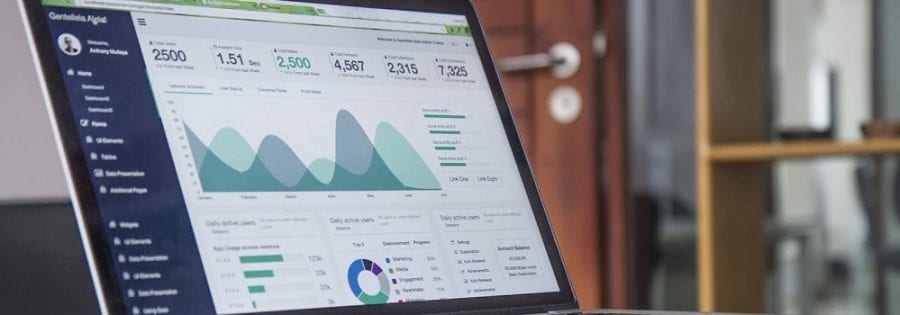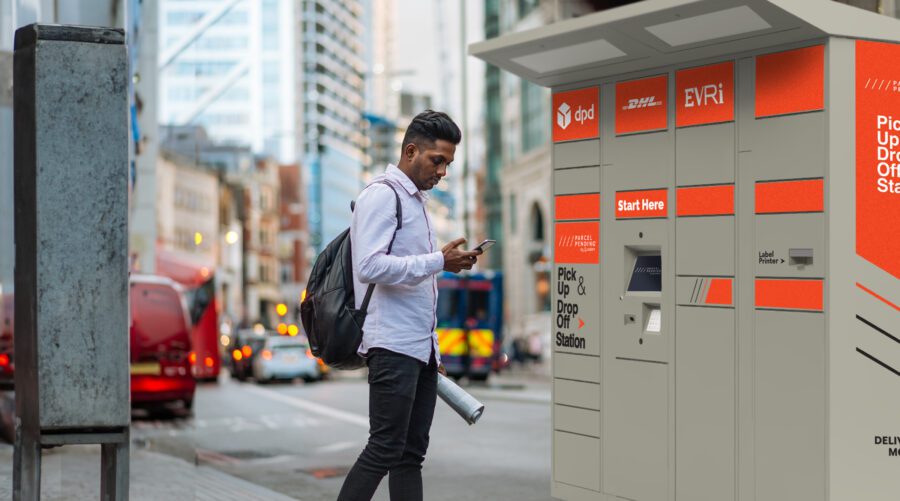
Multifamily
Package Delivery Statistics
Written by: Parcel Pending
9 Min Read
Published: July 12, 2019
Updated: April 4, 2023
Over the past few years, e-commerce has permeated the fabric of consumer culture. In turn, usage of online shopping and package delivery services continues to increase at an impressive rate. Between growing adoption of same-day delivery, shipping rate changes, and new courier service delivery notifcations, a new and improved delivery process is emerging. Let’s dive into some notable package delivery statistics for 2020 and 2021.
2020 Global Package Delivery Statistics: Online Shopping Continues to Drive Parcel Volume
eCommerce is booming worldwide in light of the COVID-19 pandemic. 73% of consumers report they are shopping online more now than they did prior to the pandemic and 88% of people say they will continue to shop online even after a cure or vaccine is discovered1. And this demand adds up. According to GroupM, global retail eCommerce sales will rise to $7 trillion by 2024 (comprising 25% of all retail sales), and reach $10 trillion by 20272.
All of this online shopping spells a significant increase in package deliveries. In December 2020, Parcel Pending by Quadient processed nearly 4 million packages through our smart locker systems – a 46% increase compared to 20193. “Last year was unlike anything we’ve ever seen before in terms of total online purchases and year-round, high package volumes,” stated Lori Torres, Founder of Parcel Pending by Quadient. “We expect this growth to continue, compounding on an even greater increase in online shopping.”
National carriers who offer parcel delivery service are seeing similar spikes:
- The Washington Post reported that, in the U.S., packages typically account for 5% of postal service delivery volume; during the COVID-19 pandemic, parcel delivery volume surged 70%4.
- Canada Post delivered more than 1.8 million parcels on a single day in April, a number similar to parcel delivery volume during the Christmas peak season5.
- Driven by online shopping, Royal Mail delivered 496 million parcels in the U.K. during the last 3 months of 2020 – a 30% increase in parcel delivery volume over the same period in 20196.
2020 U.S. Parcel Delivery Statistics: Customer Expectations are Shifting Rapidly
Aside from the spike that many package delivery services are encountering, the customer experience and expectations for incoming packages has also changed drastically. When analyzing U.S. package delivery statistics, one thing is clear: Americans want their deliveries and they want them fast. For the average consumer, standard package delivery options are no longer fast enough. Now, consumers are demanding free, express delivery – next-day delivery is preferred, same-day delivery is even better.
Now, despite supply chain logistics-related challenges, retailers are under significant pressure from the customer to meet their expectations:
- The 2021 EY Future Consumer Index found that only 1 in 5 (or 21%) of U.S. consumers say they are forgiving retailers and brands for delivery disruptions due to COVID-197; in other words, the pandemic is no longer an excuse for last mile delivery-related issues.
- 68% of U.S. shoppers surveyed by Digital Commerce 360 indicated they didn’t make a purchase at least half of the time when a retailer didn’t offer free home delivery8.
- Invesp reports that most consumers expect a liberal return policy and 79% of them expect free return shipping9.
To prove why retailers rely on delivery companies so much for their shipping, check out these sentiments from PwC’s June 2021 Global Consumer Insights Survey10. Out of those surveyed:
- 46% ranked reliability (i.e., the brand delivering what they expect) among the top attributes influencing their likelihood of remaining loyal to a brand.
- 41% ranked fast/reliable delivery (e.g., same-day delivery, BOPIS options, visibility for their package/order throughout the delivery process) as one of their top considerations when shopping online.
- 31% ranked a good returns policy (e.g., free return shipment, ability to return goods in-store) among their top considerations when shopping online.
And, if those statistics didn’t show you how highly speedy shipping is valued as part of parcel delivery services, Invesp reports that11:
- 56% of shoppers aged 18-34 expect same-day delivery.
- 61% of all respondents are willing to pay extra for same-day delivery.
Same-Day Delivery: The Next Normal for Parcel Distribution
According to Convey, 81% of retailers are planning to boost spending on more complex last-mile logistics initiatives (e.g., in-store or curbside pick-up, shipping from stores, smart parcel delivery lockers)12. And a majority of retailers (57%) report they’ve diversified their carrier options (adding at least one delivery company/partner in the past year). The main reason for this was to meet consumer demand for increased delivery speed (70%) followed by balancing delivery costs with consumer expectations (49%) and offering innovative delivery solutions to remain competitive (35%).
2020 Courier Service Statistics: Recovering from COVID-Related Capacity Challenges
As you can imagine, courier services are also trying to keep up with the ever-increasing demand for faster package deliveries. At the end of 2020, FedEx led the other national carriers (and their package volume) in terms of market share, followed by UPS & USPS, DHL, and smaller regional carriers.
As of April 2021, most carriers’ on-time performance hasn’t quite caught up with pre-COVID levels. These late deliveries, as well as lost/stolen deliveries, can hurt profit margins. As previously illustrated, customers are most likely to continue supporting brands when their package arrives as expected, when expected. A forward-thinking courier company will try to get their on-time delivery percentage closer to 90 or 100% to retain their B2C customers.
Looking Ahead to 2021/2022: Notable Trends
While 2021 is still underway, we have some initial statistics that give insight into package delivery trends of this year.
1. Continued Increase in Shipping Volume
Even with consumers venturing out of their homes, shipping volume continues to increase for both large and small businesses. Experts are already predicting package delivery demand during the peak season to hit record levels…again.
- UPS CEO Carol Tomé has already reported that demand will exceed capacity by about 5 million pieces per day; UPS is adding capacity in advance of peak season (including 2 million square feet of additional sortation space) to prevent delivery disruptions or capacity caps13.
- The USPS announced planned temporary rate changes to cover costs “in anticipation of peak-season volume surges similar to levels experienced in 2020”14.
- And, with shippers, national carriers, and regional carriers still weathering freight shipping delays, National Retail Federation Vice President for Supply Chain and Customs Policy, Jon Gold, reported that as of late July 2021 “peak season has already started” – months ahead of previous years’ peak season cut-offs15.
2. Evolving Technology
With no end in sight to increasing shipping volume, delivery companies are turning to new technologies to keep up with customer demand. Parcel shippers are now using software and algorithms to optimize distribution center sortation workflows and delivery routes, as well as exploring emerging tech such as drone delivery and AI.
Retailers are also trying to keep up with the times. The NRF reports that the COVID-19 pandemic significantly impacted retailers’ push for digital transformation and contactless retail investments16:
- 72% of those surveyed say COVID accelerated their company’s digital transformation by at least a year
- 73% say the pandemic accelerated their company’s technology-related investments
- 58% of retailers say the pandemic accelerated their company’s new technology-related product launches
3. Delivery Notifications
Retailers are adapting their communication strategy to meet their customers on their preferred platforms, particularly when it comes to delivery notifications. For the time being, consumers’ preferred notification types are split between three key notification types, according to package tracking software company Route17:
- Email: while 1 in 3 people have an email account and use it regularly, the average email open time is 6.4 hours from the time the email was delivered.
- Push Notification: push notifications alert customers the moment their item is out for delivery and the moment their goods arrive on their doorstep; the key is not to send too many notifications or the customer may opt out.
- SMS: while 90% of text messages are read within 3 minutes of receipt, they’re difficult to search and lose effectiveness if not sent at the right time.
Regardless, this goes to show that people want to know where their packages are, and when exactly they’re going to show up (along with the rest of their mail) at their door. This is a key way for a carrier to improve their customer service and provide a smooth delivery experience for the customer.
4. More Returns Than Ever
With package deliveries on the rise, so too are eCommerce returns. As much as people value the convenience of shopping online, the experience still poses challenges – particularly when it comes to apparel. “Pandemic consumers who went online to shop for clothes often resorted to bracketing, buying multiple sizes, since they didn’t know exactly what they’d need,” added Kate Reidel, SVP of Business Development at Parcel Pending by Quadient. “That exacerbated the expense of managing returns.”
The National Retail Federation reports18:
- Customers returned an estimated $428 billion in products in 2020.
- The bulk of customer returns were online purchases (with a whopping 30% return rate) compared to only 8.9% for in-store purchases.
With these staggering statistics, it’s understandable that retailers’ focus has shifted to how to improve the in-store experience, particularly as it relates to reverse logistics. NRF reports that “spending on global reverse logistics technologies will spike in 2021 – forecast last year to hit $604 billion by 2025 – as retailers seek to alleviate a major pain point in the shopping journey and minimize the cost of returns”.
Package Delivery: A Changing Industry
As you can see, these package delivery statistics reveal an important narrative for consumers and businesses alike. The number of deliveries is rapidly increasing and, for those who offer a parcel delivery service, new technologies are becoming critical to greater efficiency and accuracy. Whether you work as a business, a shipping manufacturer, a part of the postal service, a delivery person, or a consumer, it is critical you understand the importance of a seamless experience, as well as address concerns like fraudulent returns, and rising customer expectations to ensure success in the new package delivery landscape.
While we’re likely to see parcel postal services change based on how retailers and shippers respond to these new demands, only time will tell how parcel service will adapt within the new year and the next normal.
Sources:
- TOP Data. (2020, August 6). TOP Data E-Commerce Behavior Report [Report]. Retrieved from: https://topagency.com/report/e-commerce-behavior-report/
- Bruell, Alexandra. The Wall Street Journal. E-Commerce to Total a Quarter of Global Retail by 2024, GroupM Forecasts. (2020, December 16). https://www.wsj.com/articles/e-commerce-to-total-a-quarter-of-global-retail-by-2024-groupm-forecasts-11608116401.
- Parcel Pending by Quadient. (2021, January 21). Parcel Pending by Quadient Finishes 2020 with a Record-Breaking Number of Installations [Press release]. Retrieved from: /en-ca/news/
- Bogage, Jacob & Dawsey, Josh. The Washington Post. Postal service to review package delivery fees as Trump influence grows. (2020, May 14). https://www.washingtonpost.com/business/2020/05/14/trump-postal-service-package-rates/.
- Canada Post. (2020, April 23). Christmas-level parcel volumes result in delays as Canada Post continues to deliver [Press release]. Retrieved from: https://www.canadapost-postescanada.ca/cpc/en/our-company/news-and-media/corporate-news/news-release-list.page
- Jolly, Jasper. The Guardian. Royal Mail delivers record parcel numbers but fewer letters during the pandemic. (2021, February 11). https://www.theguardian.com/business/2021/feb/11/royal-mail-delivers-record-parcel-numbers-as-covid-cuts-despatch-of-letters.
- Gramling, K., Orschell, J., and Chernoff, J. Harvard Business Review. How E-Commerce Fits into Retail’s Post-Pandemic Future. (2021, May 11). https://hbr.org/2021/05/how-e-commerce-fits-into-retails-post-pandemic-future.
- Cassidy, Tabitha. Digital Commerce 360. 2019 ecommerce in review: consumer insights. (2019, December 23). https://www.digitalcommerce360.com/2019/12/23/2019-ecommerce-in-review-consumer-insights/.
- Saleh, Khalid. Invesp. E-commerce Product Return Rate – Statistics and Trends [Infographic]. (2021, April 11). https://www.invespcro.com/blog/ecommerce-product-return-rate-statistics/.
- PwC. (2021). The global consumer: Changed for good [Report]. Retrieved from: https://www.pwc.com/gx/en/industries/consumer-markets/consumer-insights-survey.html
- Saleh, Khalid. Invesp. The Importance of Same-Day Delivery – Statistics and Trends. (2021, April 11). https://www.invespcro.com/blog/same-day-delivery/.
- Convey. Convey Data: Retailers accelerate last mile investments and on-time performance improvements. (2021, April). https://www.getconvey.com/blog-d-carrierperformance-april-2021/.
- Garland, Max. Supply Chain Dive. UPS: Peak demand projected to exceed capacity by 5M packages daily. (2021, July 27). https://www.supplychaindive.com/news/ups-earnings-peak-capacity-volume-carol-tome/603908/.
- United States Postal Service. (2021, August 10). U.S. Postal Service Announces Proposed Temporary Rate Adjustments for 2021 Holiday Peak Season [Press release]. Retrieved from: https://about.usps.com/newsroom/national-releases/
- Leonard, Matt. Supply Chain Dive. A congested freight environment shows no sign of improvement for peak. (2021, July 22). https://www.supplychaindive.com/news/peak-season-port-congestion-ocean-freight-shipping-holiday-volume/603742/.
- National Retail Federation & Euromonitor. Using Retail Tech Innovation to Enhance the Customer Experience. (2021, June 16). https://nrf.com/research/using-retail-tech-innovation-enhance-customer-experience.
- Lorge, Liz. Route. Your Customers Don’t Want an Email (They Want a Push). (2020, August 6). https://content.route.com/blog/ecommerce-customers-email-push-notifications/.
- The National Retail Federation. (2021). Customer Returns in the Retail Industry 2020 [Report]. Retrieved from: https://nrf.com/research/customer-returns-retail-industry



